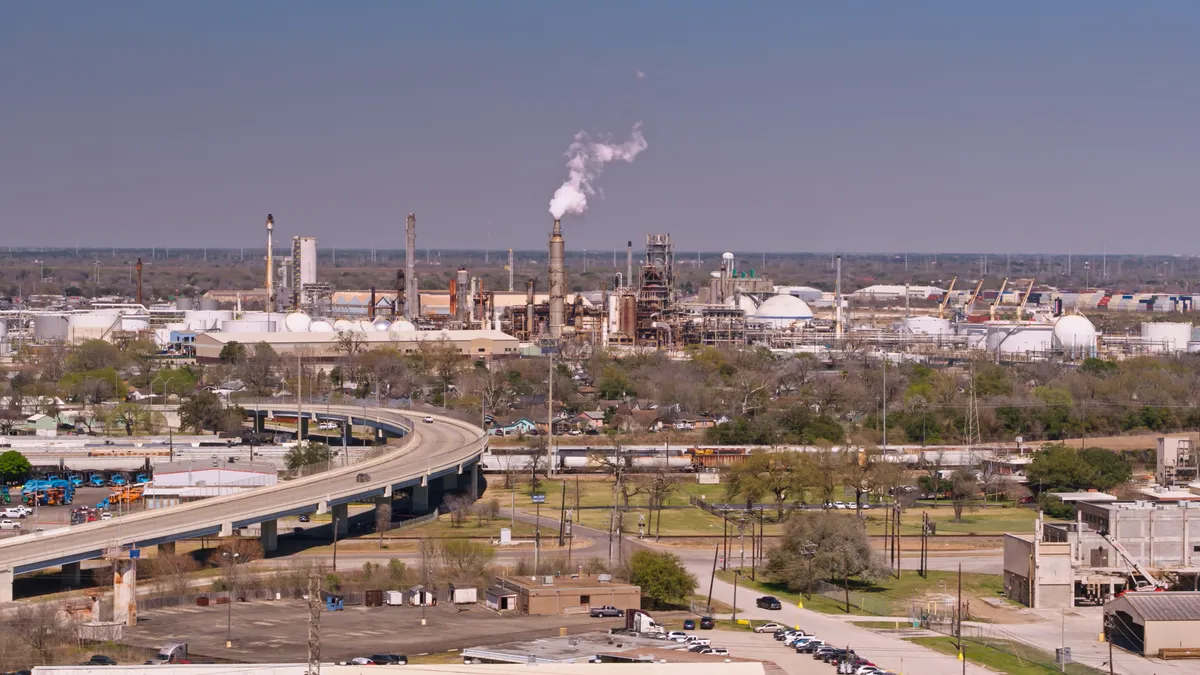Houston is on a mission to better understand the air pollution that plagues communities near chemical plants — and the U.S. Environmental Protection Agency announced Monday that it is supporting the effort with a nearly $500,000 grant.
The funds, which come from the Inflation Reduction Act, will go toward a build-out of community air monitoring in high-risk neighborhoods. The city will use the data the air monitors provide to make EPA-backed recommendations to the state’s environmental agency, potentially regarding stricter regulation of industrial emissions, said Loren Hopkins, the Houston Health Department’s chief environmental science officer.
“Because [the data is] high-quality, and we've done this work with EPA, it's more likely to be used,” Hopkins said. “We want to make sure that the industry living next to communities is as safe as possible with their controls and that we all feel that we have evidence that it is under control,” she added,
This air monitoring effort was born out of concerns about “amazingly high concentrations” of 1,3-butadiene the city detected near two adjacent chemical plants, Hopkins said. Exposure to this air pollutant, which smells like gasoline, can cause cancer and trigger short-term health impacts including eye and throat irritation, headaches and nausea. The two chemical plants of concern — the Goodyear and Texas Petrochemical plants — are the highest emitters of 1,3-butadiene in Houston, Hopkins said. This concern was only heightened by the petrochemical plant’s plans to expand its operations, despite opposition from the city and community members, Hopkins said.
“We have some baseline information on what these toxic hazardous air pollutants are, right in that community, prior to the expansion,” she said. The city will “be watching” to see “whether the new controls that they put in as they’re doing expansion reduces contamination of the toxics or not,” she said.
Houston will also use the EPA grant to monitor three other hazardous air pollutants: benzene, formaldehyde, and ethylene oxide.
Much of the grant funding will go toward the “very expensive” equipment and sampling needed to monitor air quality, but the city also will use it to pay community partners helping with the project, Hopkins said. Community members are an invaluable resource, she said, because they often know when and where experienced air pollution is worst. Monitors will be placed in residents’ homes.
“It's not lip service in any way,” Hopkins said. “We actually seriously need [residents’] help.”
In statements, U.S. legislators from Texas hailed the EPA’s announcement of the air monitoring grant. Rep. Al Green noted in a statement that in 2021, the city’s health department received more than 40 air pollution complaints from ZIP codes in the historically Black south Houston neighborhood of Sunnyside. The EPA’s own 2014 data “indicates a known cancer risk in this area” that has increased over time, Green added.
Rep. Sheila Jackson Lee said in a statement that “Many individuals in these communities are unaware of the quality of air that they are breathing in, which can have long term and life-threatening health impacts.”













